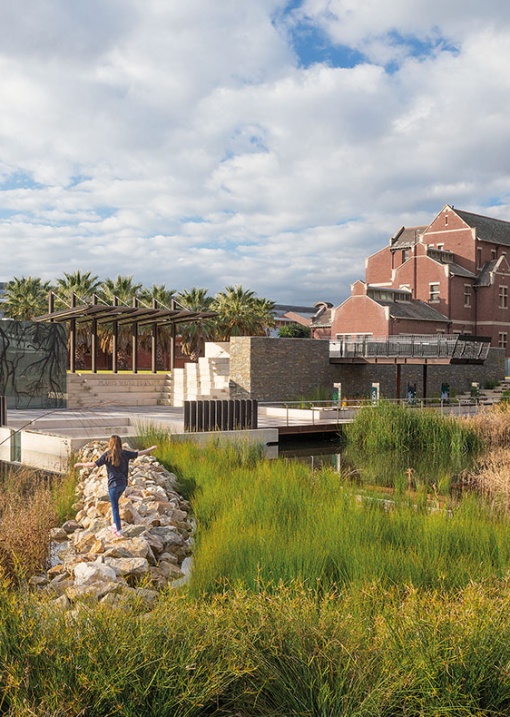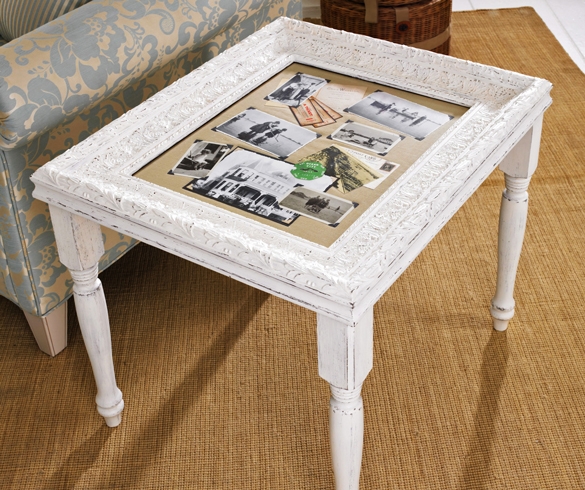Cities are wonderful places. They’re great at providing opportunities, connection, and celebrating culture. They’re also really good at insulating human lives from natural processes. Take water, for example. This incredible, life giving liquid just appears at the turn of a tap in most homes in Australia. The natural and mechanical processes required to get it to and from homes are virtually invisible. This is both smart and dangerous.
Invisible processes are harder to value; we humans are less inclined to care if something isn’t front-and-centre of our view. I can vouch for this first hand, having recently migrated to the bush where our water supply is 100% visible (we’re not connected to mains water). It’s the rain, roof, pipes and tank; if there’s no rain, there’s no water. All of a sudden, the value of water in our household has increased tenfold whilst our usage has decreased substantially.
Landscape architecture firm Taylor Cullity Lethlean (TCL) are masters of highlighting the poetry and processes of the natural world. One of their recent projects, the Adelaide Botanical Gardens Wetland, is illustrative of their layered approach. It recently won the 2017 Sustainability Award for Landscape and Urban Design.
Located in the south-east corner of the Adelaide Botanic Gardens (ABG), the 2.5-hectare wetland is a highly urbanised waterway near the centre of Adelaide. The system has a lot of work to do – it’s designed to ameliorate flooding, collect and purify stormwater, provide habitat for native wildlife and replenish local aquifers so as to supply the entire water needs for the Adelaide Botanic Gardens in seven years’ time. This wasn’t enough of a challenge for TCL, however, so they expanded the brief to create a playful and educative space; allowing city dwellers to interact first hand with the way water moves through urban areas.
‘It was really important to us that we weren’t just delivering the functional design but were also educating the community about how precious water is,’ TCL director Damian Schultz tells me. ‘There’s a lot of water in our environment that is wasted, it goes straight out to sea. Having a design that integrates natural systems with environmental engineering systems and education was a fundamentally important outcome of the project.’
TCL achieved their aim of communicating the story of water in the city through the fusing of smart design, art and multidisciplinary collaboration. ‘We use art in our projects as a tool to make places interesting,’ Damian says. ‘To develop layers of meaning within design, and establish layers of narrative within precincts.’
Accessibility is a really important element of the design too, according to Damian. ‘As a culture, we’ve become so risk averse that we’re not encouraging anyone to engage with public space at all. The goal of this project was to engage people from all age groups by providing a variety of sensory, aesthetic, and educative experiences.’
Visitors are encouraged to interact with the wetland through a number of different spaces including a sunken amphitheatre (where visitors can see eye-to-eye with ducks and other water critters), an observation deck, pathways and a series of stepping stones throughout the wetland, allowing all visitors to get up close and personal with their environment.
There’s no life without water. Projects like the Adelaide Botanic Gardens wetlands by TCL are an important step towards both re-connecting us with the natural systems that support our existence; and implementing smarter, more environmentally sustainable solutions to nurture and conserve all life on earth. Now and in the future.

Located on First Creek, the wetland is a highly urbanised waterway near the centre of Adelaide. The project ameliorates flooding, purifies polluted stormwater runoff, is the source for an Aquifer Storage and Recovery system, provides habitat and is an immersive educational and recreational resource. Photo – John Gollings.

The lower amphitheatre – Lecture Space, Rubbing Panels, Glass viewing windows. Photo – John Gollings.

As you move through the wetland interpretation installations provide factual information on plants and water in an engaging and immersive manner. Photo – John Gollings.

Pathways and a series of stepping stones throughout the wetland allow visitors to get up close and personal with their environment. Photo – John Gollings.

A mix of public art and integrated interpretation installations provide a series of experiences to stimulate imagination while engaging with the natural environment in a creative and innovative way. Photo – John Gollings.

The sunken amphitheatre and observation deck encourage connection with the ecosystem. Photo – John Gollings.

The wetland is densely planted along the safety rock benches in lieu of fencing. Photo – John Gollings.

The public wandering throughout the wetlands. Photo – John Gollings.








